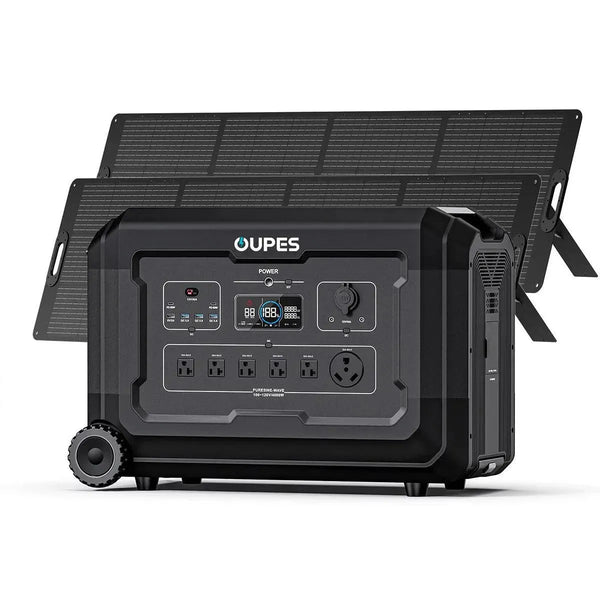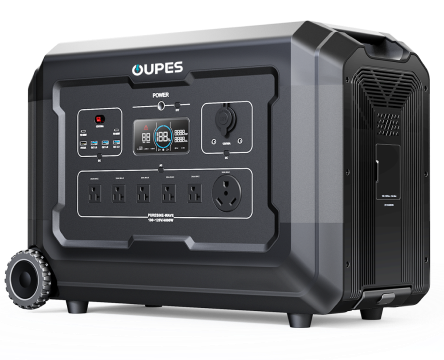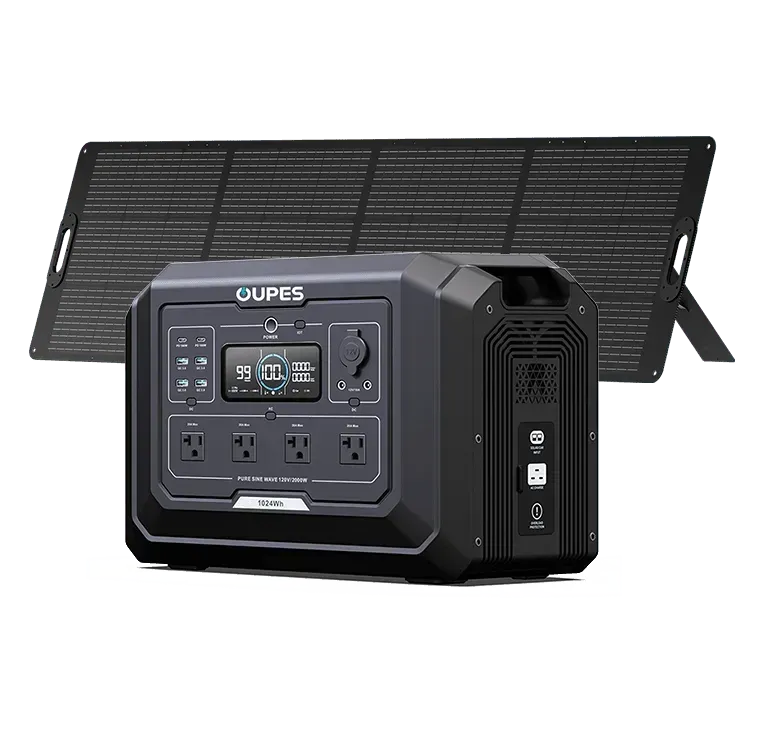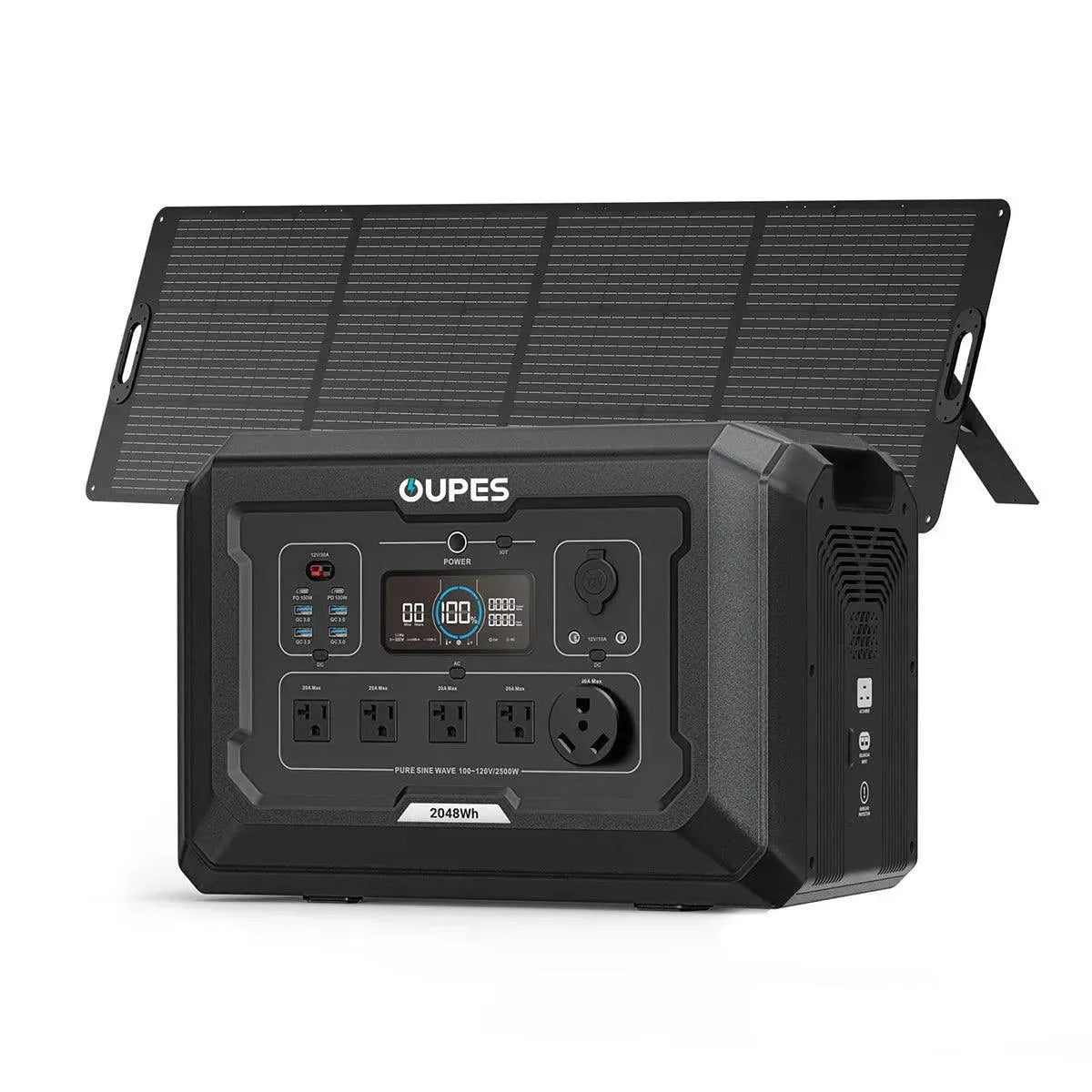
Imagine a winter storm plunges your neighborhood into darkness for days. While others huddle under blankets, your home glows with light, warm air circulates, and the refrigerator hums steadily. This security comes from a whole-home battery backup—but what’s the real price of uninterrupted comfort? Beyond sticker prices lie complex layers: battery chemistry premiums, hidden installation fees, and lucrative incentives that can slash costs by 40%. Let’s dissect the investment that transforms vulnerability into unshakeable resilience.
Core System Components and Their Price Tags
The battery unit itself typically consumes 50-60% of your total budget. Lithium iron phosphate (LFP) batteries like OUPES offer superior longevity (6,000+ cycles) but command $8,000-$15,000 for 10-15kWh capacities. Lead-acid alternatives seem cheaper at $5,000-$9,000 initially but require double the capacity for equivalent usable power due to 50% depth of discharge limitations. Beyond cells, the enclosure and thermal management systems add $1,000-$3,000—liquid-cooled units maintain performance in extreme temperatures but increase costs 25% over passive designs.
Power conversion electronics form the second major expense. Hybrid inverters capable of grid charging, solar integration, and backup activation cost $3,000-$6,000 for 10kW models. Critical is surge capacity: Units handling 200% overload briefly (for motor startups) cost 15-20% more than base models. Transfer switches—either automatic ($1,200-$2,500) or manual ($500-$800)—ensure safe isolation from the grid during outages. For whole-home coverage, consider smart panels that dynamically manage circuits; the OUPES Nova system adds $1,800-$4,000 but reduces required battery size by optimizing load distribution.
Balance-of-system components quietly inflate budgets. Wiring and conduits for high-voltage DC systems run $1,000-$2,500 depending on home layout. Monitoring ecosystems (Wi-Fi gateways, apps) add $300-$800. Don’t overlook ongoing costs: Battery maintenance kits (terminal cleaners, torque wrenches) cost $150 annually, while cloud monitoring subscriptions average $100/year. Component quality creates dramatic price variations: UL-certified equipment costs 20% more than uncertified imports but carries verified safety standards and warranty support.
Installation Complexities and Hidden Fees
Labor constitutes 20-30% of total project costs, with rates varying wildly by region. Electricians in California charge $120-$180/hour versus $80-$120 in Midwest states. Complexity escalates prices: Installing batteries in conditioned basements takes 8-12 hours ($960-$2,160), while attic placements requiring structural reinforcements and ventilation can double labor time. Permitting fees range from $300 for rural areas to $2,500+ in cities like San Francisco where fire department reviews and grid interconnection studies are mandatory.
Electrical upgrades often surprise homeowners. Older homes with 100A panels typically need $1,500-$4,000 upgrades to 200A service to handle battery backfeed. Distance between components matters: Every 30 feet between battery and inverter requires thicker gauge wiring, adding $500-$800. For solar integration, rapid shutdown devices (required by NEC 2020) add $75-$150 per panel. Grounding systems meeting local codes might require driving new rods ($200/site) or installing plates in rocky soil ($500+). Always budget 15% extra for unforeseen issues like discovering outdated wiring during installation.
Location-specific requirements dramatically impact budgets. Seismic zones like California demand $800-$1,200 battery restraint systems. Flood-prone areas require elevated platforms adding $600-$1,000. Historic districts may enforce concealed wiring mandates that triple conduit costs. Even clearance regulations matter: Maintaining 36-inch pathways around equipment in garages could necessitate reorganization costing $1,000-$3,000. These variables make site surveys non-negotiable—professionals identify hidden costs before contracts are signed.
Incentives That Slash Your Net Investment
The federal Investment Tax Credit (ITC) remains the most significant savings tool, currently offering 30% back on battery costs (including installation) through 2032. A $20,000 OUPES system yields $6,000 tax savings. State-level incentives stack further: New York’s NY-SUN program provides $500/kWh rebates (capped at $5,000), while Massachusetts offers 40% additional credits. Utility programs like PG&E’s Self-Generation Incentive Program (SGIP) pay up to $200/kWh for medically vulnerable households.
Grid services participation generates ongoing revenue. Virtual Power Plant (VPP) programs compensate homeowners $100-$250 annually per installed kWh for sharing stored power during peak demand. Time-of-use arbitrage leverages rate differentials: In California, charging batteries at $0.25/kWh off-peak and discharging during $0.45/kWh peak periods saves $0.20/kWh daily. For a 10kWh system cycling 50% daily, this nets $365/year—effectively paying back hardware costs in 10-15 years.
Warranty valuations impact long-term economics. Premium LFP batteries carry 10-year warranties covering 70% capacity retention—avoiding $8,000-$12,000 replacement costs. Compare degradation terms carefully: Some pro-rate coverage after Year 5, while others like OUPES offer straightforward capacity guarantees. Extended service plans ($300-$500/year) cover labor for replacements, critical when technician dispatch fees exceed $250/visit. Always calculate total cost of ownership: A $15,000 system lasting 15 years costs $1,000 annually—cheaper than generator fuel and maintenance over the same period.
Long-Term Operational Costs and Savings
Efficiency losses silently drain budgets. Even premium inverters waste 4-8% energy during conversions. For a home using 20kWh daily, that’s 584-1,168kWh lost annually—$175-$350 at $0.30/kWh. Temperature effects compound this: Batteries in unheated garages lose 15-25% capacity in winter, functionally increasing your cost per usable kWh. Smart systems mitigate this; OUPES units activate internal heaters below 32°F, but this consumes 0.5kWh daily—$55/year in extra energy costs.
Maintenance rituals prevent expensive failures. Annual capacity calibrations ($150/service) ensure accurate state-of-charge readings. Terminal cleaning every six months prevents corrosion-induced resistance that can reduce efficiency by 8%. Software updates maintain compatibility with grid rule changes—neglecting these might require $800 control board replacements later. For lead-acid systems, quarterly electrolyte checks and equalization charges add $300/year in professional services.
Offset calculations reveal true savings. During grid outages, preventing $500 in spoiled food and $1,000 in hotel costs makes a single blackout pay for months of battery financing. For solar owners, batteries capture excess daytime production normally sold back at low rates (e.g., $0.08/kWh), then power evening consumption avoiding $0.35/kWh grid purchases—netting $0.27/kWh savings. A 10kWh system cycling daily saves $985 annually—transforming batteries from cost centers to revenue generators.
Future-Proofing Strategies to Avoid Obsolescence
Scalability prevents costly replacements. Modular systems like OUPES let you start with 5kWh ($6,000) and add $3,000 blocks as needs evolve—cheaper than replacing monolithic units. Ensure inverters have 30% headroom: A 10kW model accommodates future 3kW solar expansions without $2,500 upgrade fees. Communication protocols matter: Units with CAN bus or RS485 ports integrate new technologies without gateway replacements.
Chemistry advancements demand forward compatibility. Today’s LFP batteries may seem cutting-edge, but solid-state prototypes promise 2x density by 2028. Choose systems with firmware-upgradable BMS that can adapt charging algorithms for next-gen cells. Avoid proprietary connectors that lock you into single brands; standardized LFP voltage ranges (51.2V nominal) ensure interoperability. Cloud-connected units gain features remotely: Recent OUPES updates added wildfire smoke response modes without hardware changes.
Regulatory compliance shields against retrofit costs. NEC 2024 will likely require more sophisticated arc-fault detection—systems lacking this may need $1,500 add-ons later. Fire codes increasingly mandate exterior disconnect switches; installing them initially costs $350 versus $1,200 retrofits. Consider climate resilience: Investing $500 in battery cooling systems now avoids $8,000 replacements from heat degradation in desert climates. These precautions extend functional lifespans beyond warranty periods.
Whole-home battery costs resemble icebergs—the visible hardware is merely the tip. From $200 permits to $15,000 electrical upgrades, true budgeting requires excavating layers of hidden expenses. Yet strategic planning transforms apparent burdens into investments: Federal incentives and utility programs can erase 30-50% of upfront costs, while daily energy arbitrage generates ongoing returns.
Remember: Your battery’s price tag isn’t an expense but a resilience dividend. By understanding the full cost architecture—and leveraging every incentive and efficiency—you secure not just backup power, but uninterrupted life continuity. When the grid fails, your balance sheet remains intact, and your home pulses with assured energy.




























